Introduction to Accounting and Finance: Ratio Analysis Report
VerifiedAdded on 2022/12/23
|11
|2011
|66
Report
AI Summary
This report presents a comprehensive analysis of financial statements and key financial ratios. Task 1 includes an income statement and a statement of financial position for the year ending December 31st, 2020, along with a working note for depreciation calculations. Task 2 delves into ratio analysis, examining profitability ratios (Gross Profit Margin, Net Profit Margin, Return on Capital Employed), liquidity ratios (Current Ratio, Quick Ratio), and leverage ratios (Debt-equity ratio). The analysis compares the financial performance of Company X and Company Y, providing recommendations for improvement. The report concludes with a list of references and an appendix summarizing the ratio analysis findings. The report aims to provide a detailed understanding of financial statement analysis and its implications.
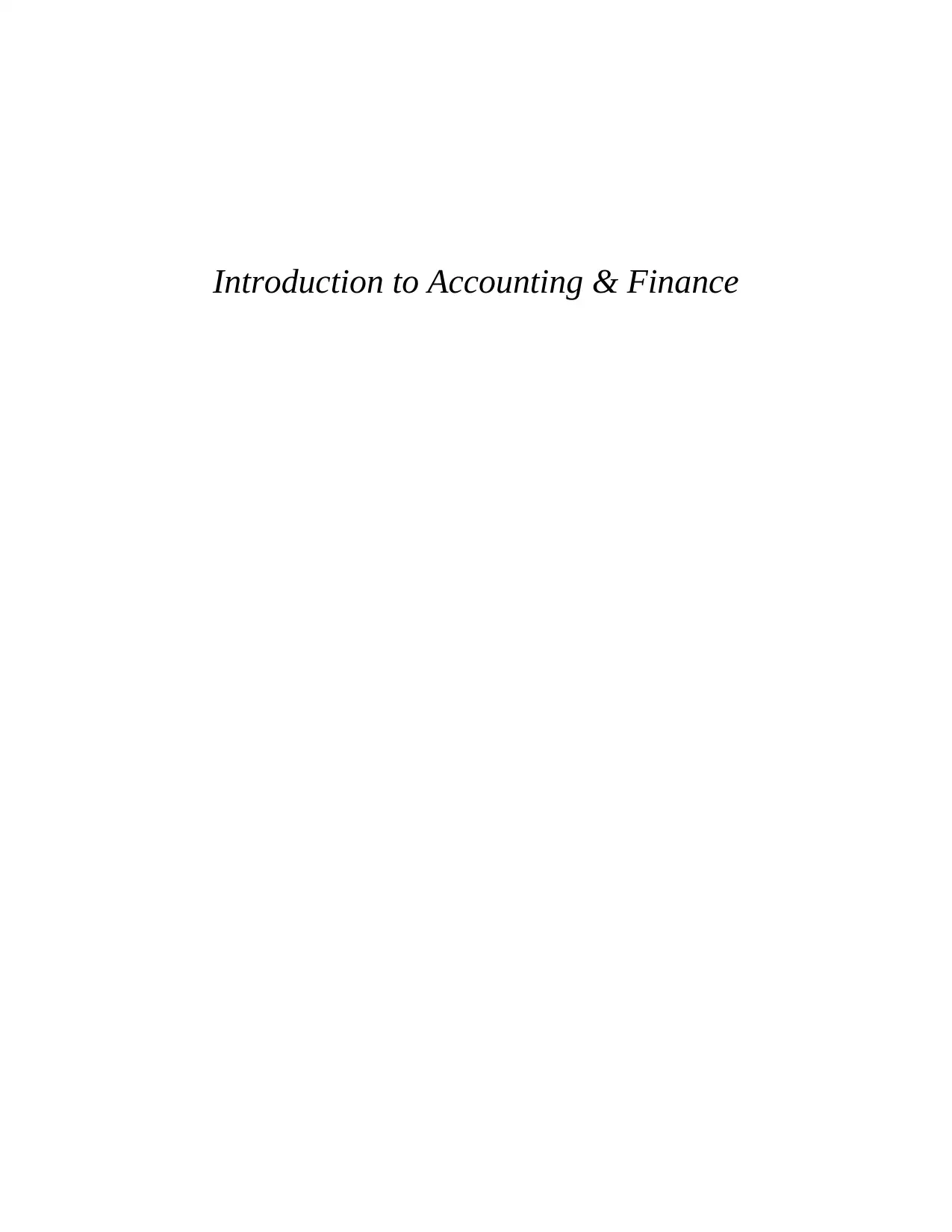
Introduction to Accounting & Finance
Paraphrase This Document
Need a fresh take? Get an instant paraphrase of this document with our AI Paraphraser
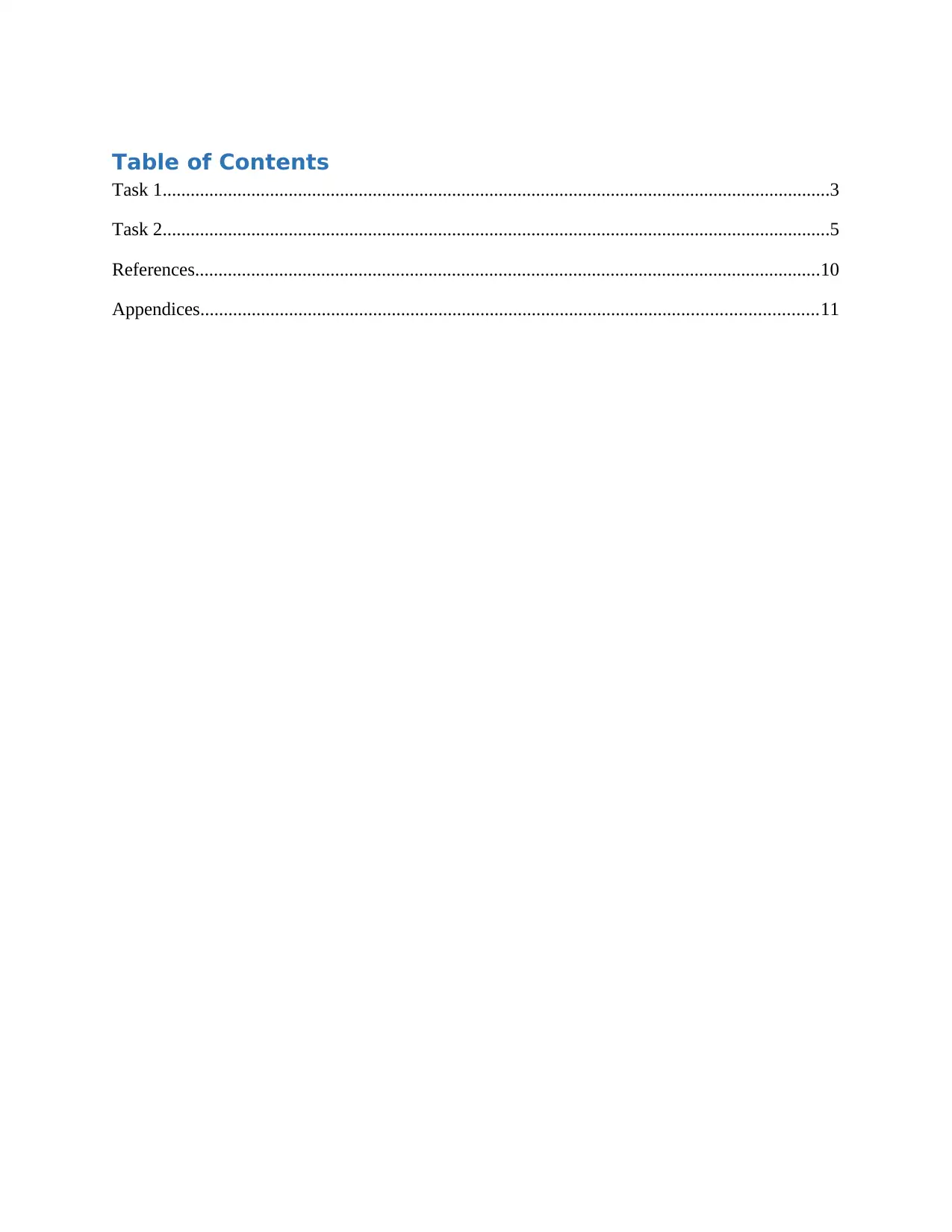
Table of Contents
Task 1...............................................................................................................................................3
Task 2...............................................................................................................................................5
References......................................................................................................................................10
Appendices....................................................................................................................................11
Task 1...............................................................................................................................................3
Task 2...............................................................................................................................................5
References......................................................................................................................................10
Appendices....................................................................................................................................11
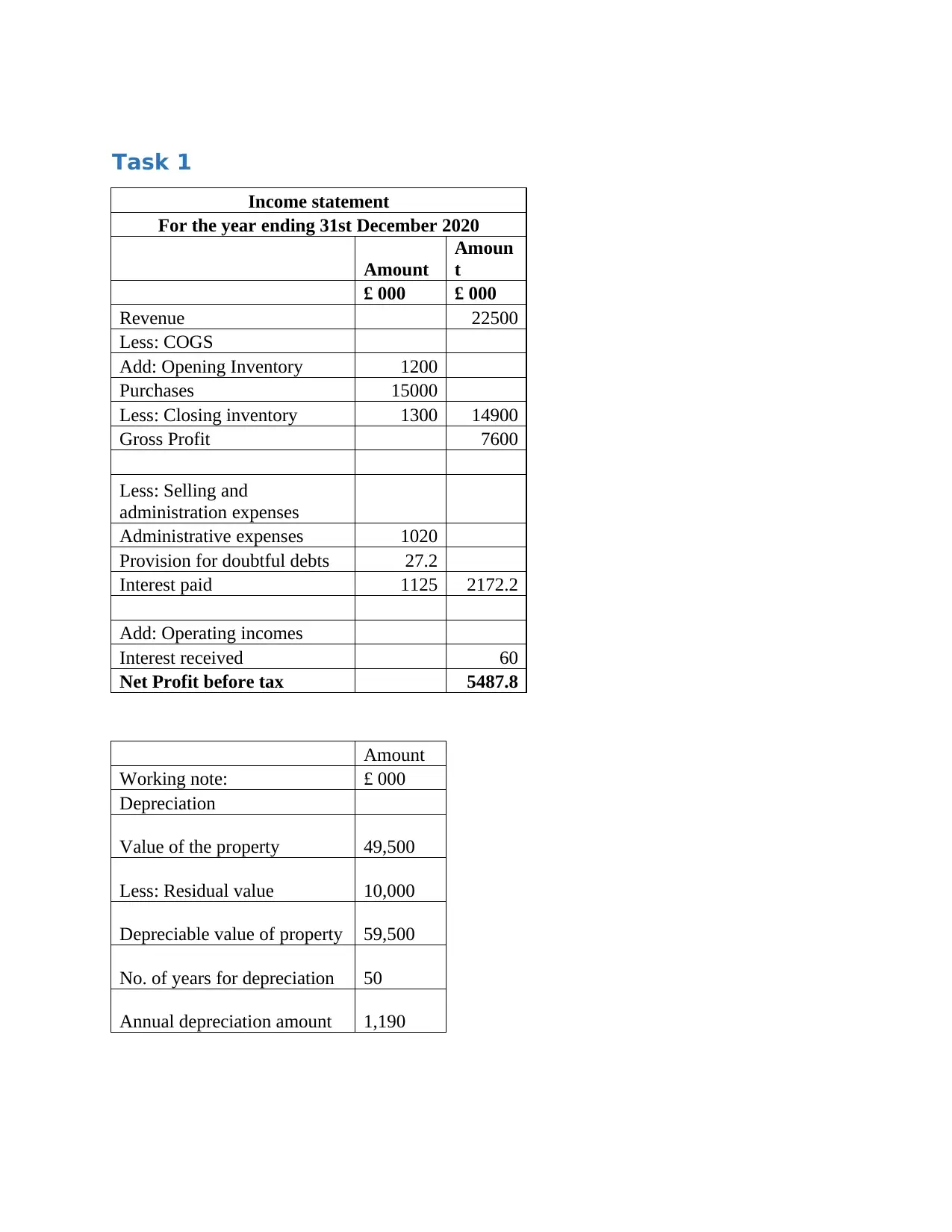
Task 1
Income statement
For the year ending 31st December 2020
Amount
Amoun
t
£ 000 £ 000
Revenue 22500
Less: COGS
Add: Opening Inventory 1200
Purchases 15000
Less: Closing inventory 1300 14900
Gross Profit 7600
Less: Selling and
administration expenses
Administrative expenses 1020
Provision for doubtful debts 27.2
Interest paid 1125 2172.2
Add: Operating incomes
Interest received 60
Net Profit before tax 5487.8
Amount
Working note: £ 000
Depreciation
Value of the property 49,500
Less: Residual value 10,000
Depreciable value of property 59,500
No. of years for depreciation 50
Annual depreciation amount 1,190
Income statement
For the year ending 31st December 2020
Amount
Amoun
t
£ 000 £ 000
Revenue 22500
Less: COGS
Add: Opening Inventory 1200
Purchases 15000
Less: Closing inventory 1300 14900
Gross Profit 7600
Less: Selling and
administration expenses
Administrative expenses 1020
Provision for doubtful debts 27.2
Interest paid 1125 2172.2
Add: Operating incomes
Interest received 60
Net Profit before tax 5487.8
Amount
Working note: £ 000
Depreciation
Value of the property 49,500
Less: Residual value 10,000
Depreciable value of property 59,500
No. of years for depreciation 50
Annual depreciation amount 1,190
⊘ This is a preview!⊘
Do you want full access?
Subscribe today to unlock all pages.

Trusted by 1+ million students worldwide
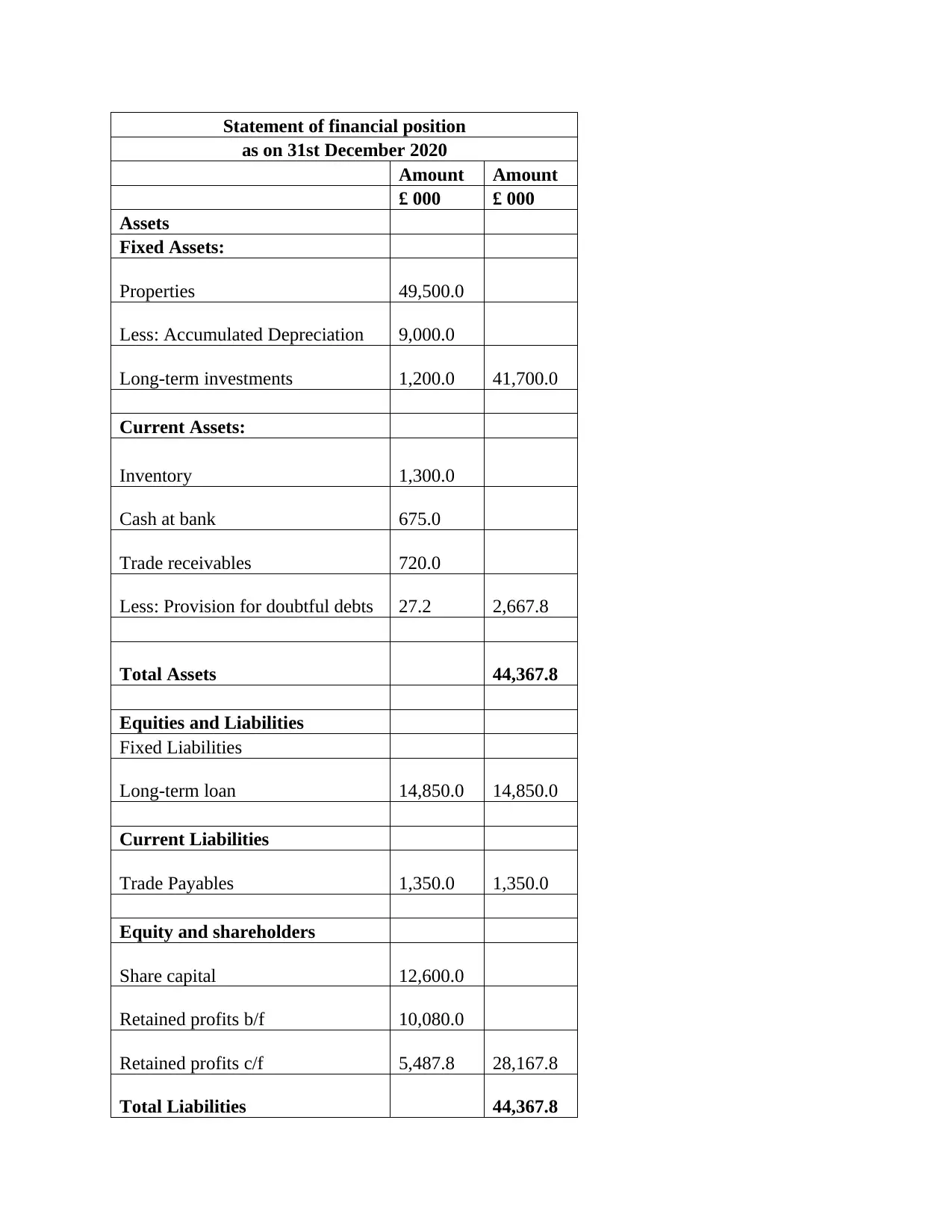
Statement of financial position
as on 31st December 2020
Amount Amount
£ 000 £ 000
Assets
Fixed Assets:
Properties 49,500.0
Less: Accumulated Depreciation 9,000.0
Long-term investments 1,200.0 41,700.0
Current Assets:
Inventory 1,300.0
Cash at bank 675.0
Trade receivables 720.0
Less: Provision for doubtful debts 27.2 2,667.8
Total Assets 44,367.8
Equities and Liabilities
Fixed Liabilities
Long-term loan 14,850.0 14,850.0
Current Liabilities
Trade Payables 1,350.0 1,350.0
Equity and shareholders
Share capital 12,600.0
Retained profits b/f 10,080.0
Retained profits c/f 5,487.8 28,167.8
Total Liabilities 44,367.8
as on 31st December 2020
Amount Amount
£ 000 £ 000
Assets
Fixed Assets:
Properties 49,500.0
Less: Accumulated Depreciation 9,000.0
Long-term investments 1,200.0 41,700.0
Current Assets:
Inventory 1,300.0
Cash at bank 675.0
Trade receivables 720.0
Less: Provision for doubtful debts 27.2 2,667.8
Total Assets 44,367.8
Equities and Liabilities
Fixed Liabilities
Long-term loan 14,850.0 14,850.0
Current Liabilities
Trade Payables 1,350.0 1,350.0
Equity and shareholders
Share capital 12,600.0
Retained profits b/f 10,080.0
Retained profits c/f 5,487.8 28,167.8
Total Liabilities 44,367.8
Paraphrase This Document
Need a fresh take? Get an instant paraphrase of this document with our AI Paraphraser
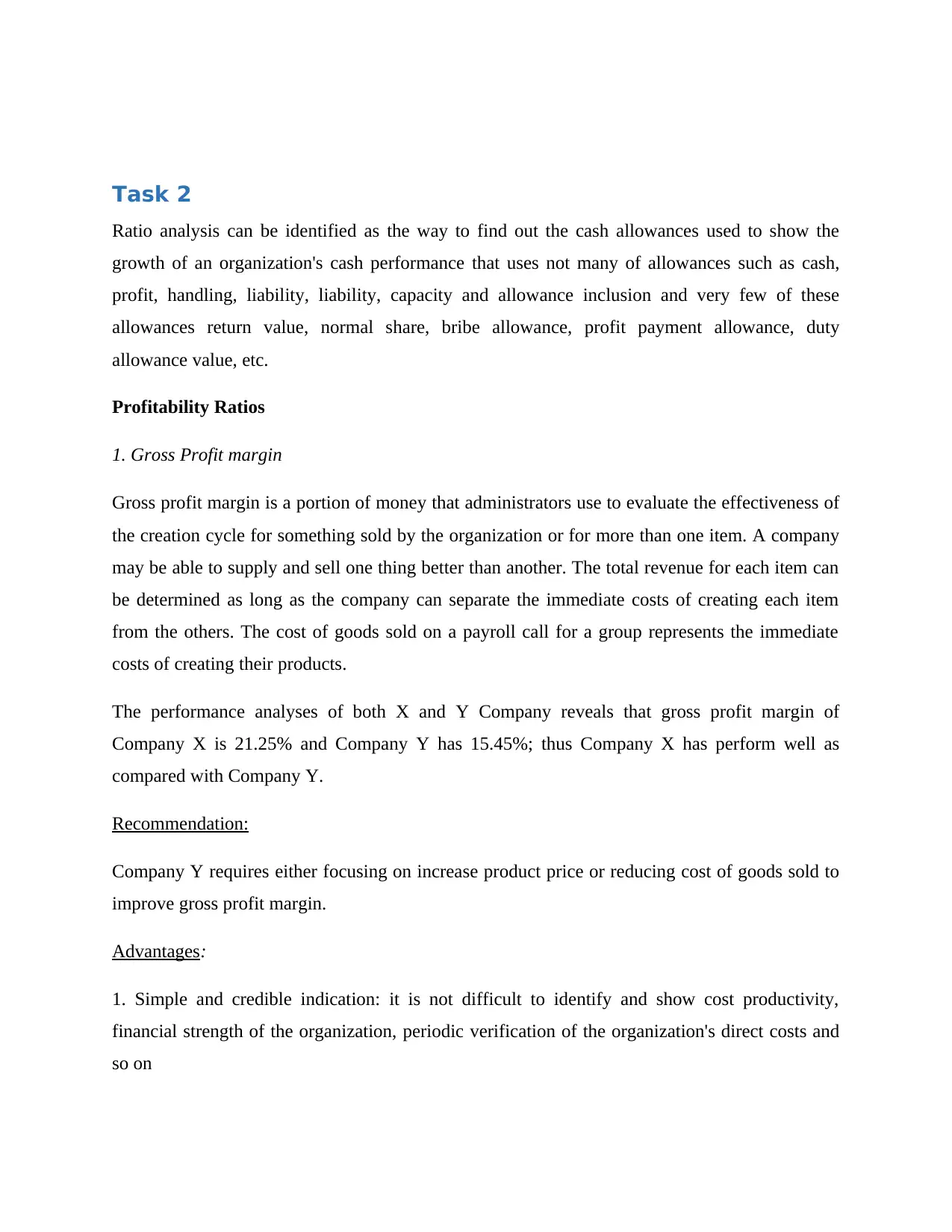
Task 2
Ratio analysis can be identified as the way to find out the cash allowances used to show the
growth of an organization's cash performance that uses not many of allowances such as cash,
profit, handling, liability, liability, capacity and allowance inclusion and very few of these
allowances return value, normal share, bribe allowance, profit payment allowance, duty
allowance value, etc.
Profitability Ratios
1. Gross Profit margin
Gross profit margin is a portion of money that administrators use to evaluate the effectiveness of
the creation cycle for something sold by the organization or for more than one item. A company
may be able to supply and sell one thing better than another. The total revenue for each item can
be determined as long as the company can separate the immediate costs of creating each item
from the others. The cost of goods sold on a payroll call for a group represents the immediate
costs of creating their products.
The performance analyses of both X and Y Company reveals that gross profit margin of
Company X is 21.25% and Company Y has 15.45%; thus Company X has perform well as
compared with Company Y.
Recommendation:
Company Y requires either focusing on increase product price or reducing cost of goods sold to
improve gross profit margin.
Advantages:
1. Simple and credible indication: it is not difficult to identify and show cost productivity,
financial strength of the organization, periodic verification of the organization's direct costs and
so on
Ratio analysis can be identified as the way to find out the cash allowances used to show the
growth of an organization's cash performance that uses not many of allowances such as cash,
profit, handling, liability, liability, capacity and allowance inclusion and very few of these
allowances return value, normal share, bribe allowance, profit payment allowance, duty
allowance value, etc.
Profitability Ratios
1. Gross Profit margin
Gross profit margin is a portion of money that administrators use to evaluate the effectiveness of
the creation cycle for something sold by the organization or for more than one item. A company
may be able to supply and sell one thing better than another. The total revenue for each item can
be determined as long as the company can separate the immediate costs of creating each item
from the others. The cost of goods sold on a payroll call for a group represents the immediate
costs of creating their products.
The performance analyses of both X and Y Company reveals that gross profit margin of
Company X is 21.25% and Company Y has 15.45%; thus Company X has perform well as
compared with Company Y.
Recommendation:
Company Y requires either focusing on increase product price or reducing cost of goods sold to
improve gross profit margin.
Advantages:
1. Simple and credible indication: it is not difficult to identify and show cost productivity,
financial strength of the organization, periodic verification of the organization's direct costs and
so on
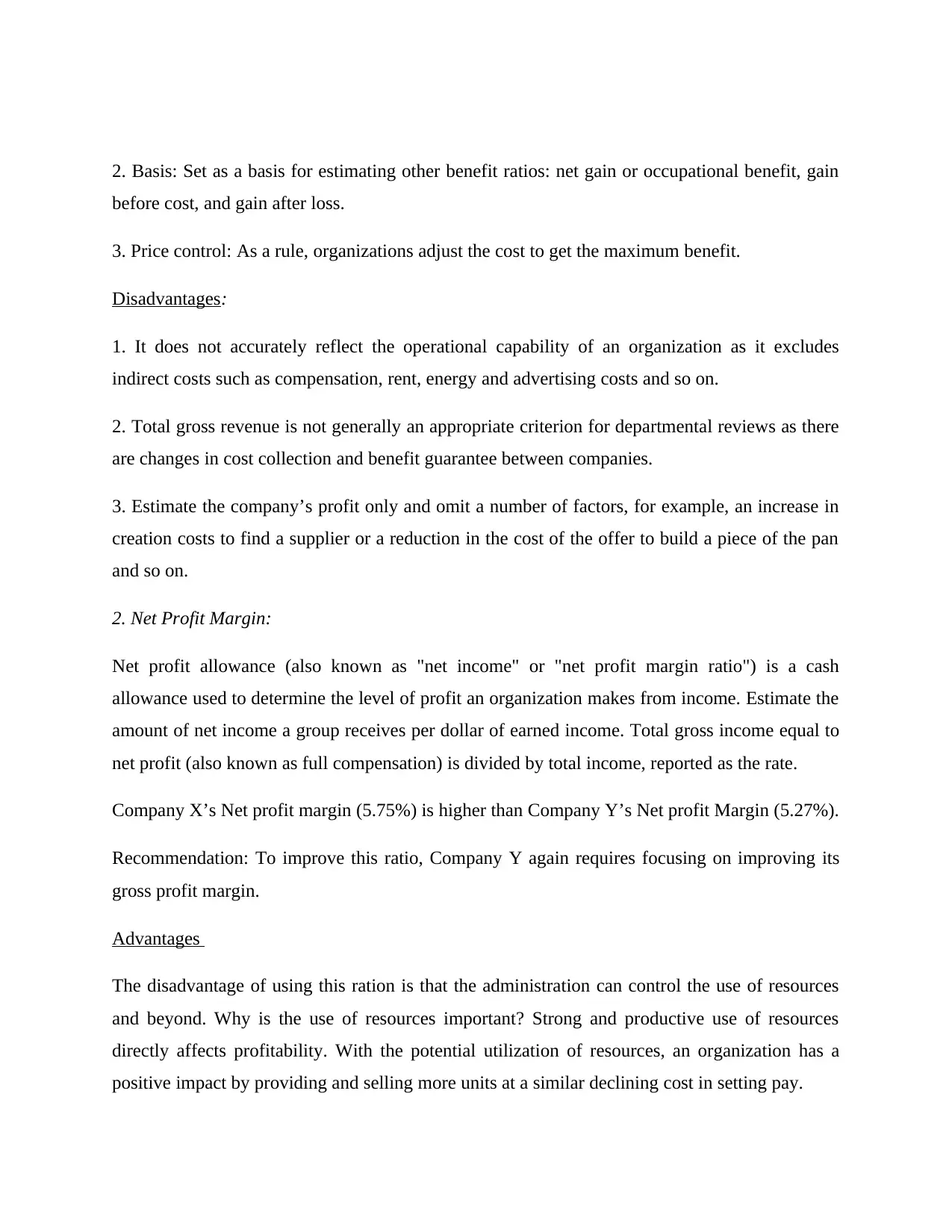
2. Basis: Set as a basis for estimating other benefit ratios: net gain or occupational benefit, gain
before cost, and gain after loss.
3. Price control: As a rule, organizations adjust the cost to get the maximum benefit.
Disadvantages:
1. It does not accurately reflect the operational capability of an organization as it excludes
indirect costs such as compensation, rent, energy and advertising costs and so on.
2. Total gross revenue is not generally an appropriate criterion for departmental reviews as there
are changes in cost collection and benefit guarantee between companies.
3. Estimate the company’s profit only and omit a number of factors, for example, an increase in
creation costs to find a supplier or a reduction in the cost of the offer to build a piece of the pan
and so on.
2. Net Profit Margin:
Net profit allowance (also known as "net income" or "net profit margin ratio") is a cash
allowance used to determine the level of profit an organization makes from income. Estimate the
amount of net income a group receives per dollar of earned income. Total gross income equal to
net profit (also known as full compensation) is divided by total income, reported as the rate.
Company X’s Net profit margin (5.75%) is higher than Company Y’s Net profit Margin (5.27%).
Recommendation: To improve this ratio, Company Y again requires focusing on improving its
gross profit margin.
Advantages
The disadvantage of using this ration is that the administration can control the use of resources
and beyond. Why is the use of resources important? Strong and productive use of resources
directly affects profitability. With the potential utilization of resources, an organization has a
positive impact by providing and selling more units at a similar declining cost in setting pay.
before cost, and gain after loss.
3. Price control: As a rule, organizations adjust the cost to get the maximum benefit.
Disadvantages:
1. It does not accurately reflect the operational capability of an organization as it excludes
indirect costs such as compensation, rent, energy and advertising costs and so on.
2. Total gross revenue is not generally an appropriate criterion for departmental reviews as there
are changes in cost collection and benefit guarantee between companies.
3. Estimate the company’s profit only and omit a number of factors, for example, an increase in
creation costs to find a supplier or a reduction in the cost of the offer to build a piece of the pan
and so on.
2. Net Profit Margin:
Net profit allowance (also known as "net income" or "net profit margin ratio") is a cash
allowance used to determine the level of profit an organization makes from income. Estimate the
amount of net income a group receives per dollar of earned income. Total gross income equal to
net profit (also known as full compensation) is divided by total income, reported as the rate.
Company X’s Net profit margin (5.75%) is higher than Company Y’s Net profit Margin (5.27%).
Recommendation: To improve this ratio, Company Y again requires focusing on improving its
gross profit margin.
Advantages
The disadvantage of using this ration is that the administration can control the use of resources
and beyond. Why is the use of resources important? Strong and productive use of resources
directly affects profitability. With the potential utilization of resources, an organization has a
positive impact by providing and selling more units at a similar declining cost in setting pay.
⊘ This is a preview!⊘
Do you want full access?
Subscribe today to unlock all pages.

Trusted by 1+ million students worldwide
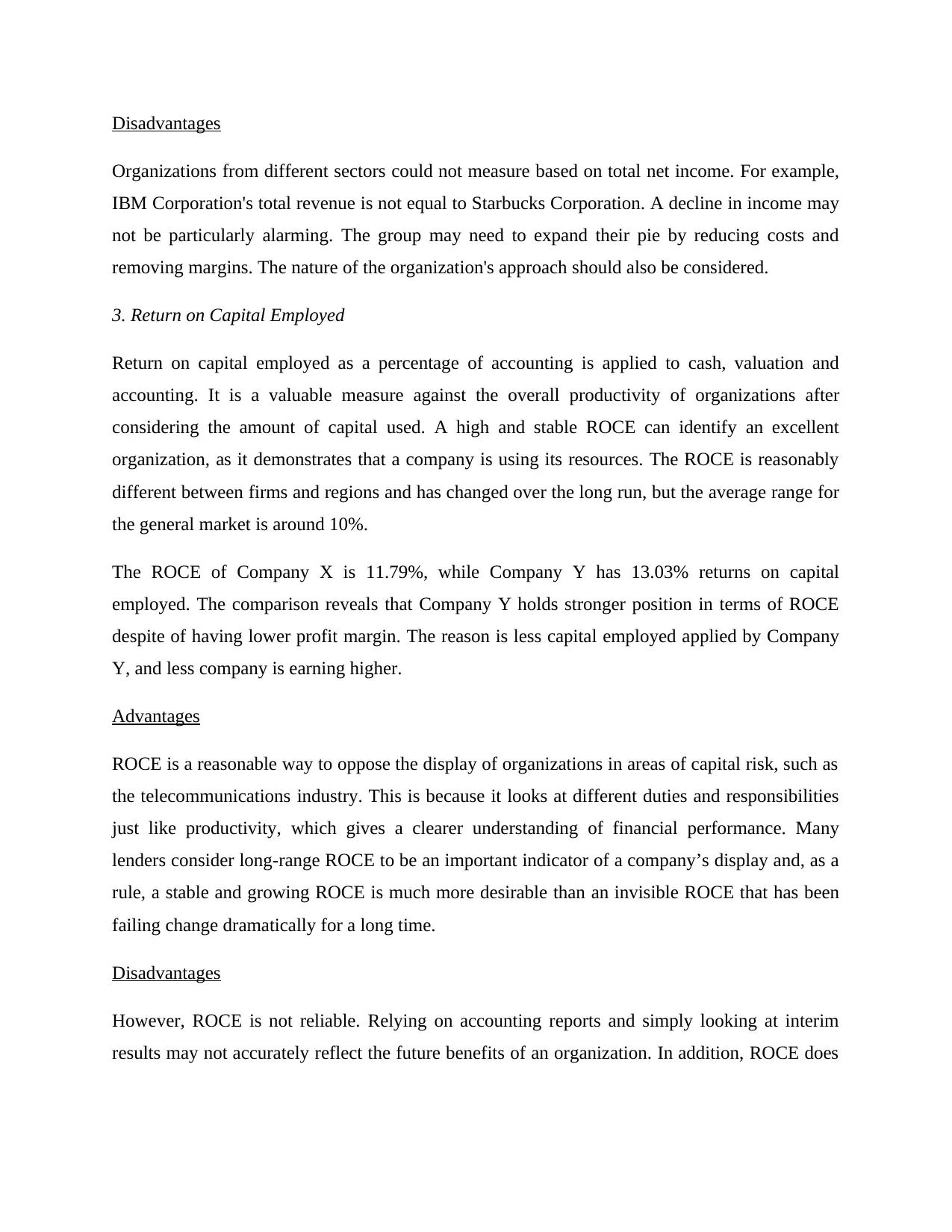
Disadvantages
Organizations from different sectors could not measure based on total net income. For example,
IBM Corporation's total revenue is not equal to Starbucks Corporation. A decline in income may
not be particularly alarming. The group may need to expand their pie by reducing costs and
removing margins. The nature of the organization's approach should also be considered.
3. Return on Capital Employed
Return on capital employed as a percentage of accounting is applied to cash, valuation and
accounting. It is a valuable measure against the overall productivity of organizations after
considering the amount of capital used. A high and stable ROCE can identify an excellent
organization, as it demonstrates that a company is using its resources. The ROCE is reasonably
different between firms and regions and has changed over the long run, but the average range for
the general market is around 10%.
The ROCE of Company X is 11.79%, while Company Y has 13.03% returns on capital
employed. The comparison reveals that Company Y holds stronger position in terms of ROCE
despite of having lower profit margin. The reason is less capital employed applied by Company
Y, and less company is earning higher.
Advantages
ROCE is a reasonable way to oppose the display of organizations in areas of capital risk, such as
the telecommunications industry. This is because it looks at different duties and responsibilities
just like productivity, which gives a clearer understanding of financial performance. Many
lenders consider long-range ROCE to be an important indicator of a company’s display and, as a
rule, a stable and growing ROCE is much more desirable than an invisible ROCE that has been
failing change dramatically for a long time.
Disadvantages
However, ROCE is not reliable. Relying on accounting reports and simply looking at interim
results may not accurately reflect the future benefits of an organization. In addition, ROCE does
Organizations from different sectors could not measure based on total net income. For example,
IBM Corporation's total revenue is not equal to Starbucks Corporation. A decline in income may
not be particularly alarming. The group may need to expand their pie by reducing costs and
removing margins. The nature of the organization's approach should also be considered.
3. Return on Capital Employed
Return on capital employed as a percentage of accounting is applied to cash, valuation and
accounting. It is a valuable measure against the overall productivity of organizations after
considering the amount of capital used. A high and stable ROCE can identify an excellent
organization, as it demonstrates that a company is using its resources. The ROCE is reasonably
different between firms and regions and has changed over the long run, but the average range for
the general market is around 10%.
The ROCE of Company X is 11.79%, while Company Y has 13.03% returns on capital
employed. The comparison reveals that Company Y holds stronger position in terms of ROCE
despite of having lower profit margin. The reason is less capital employed applied by Company
Y, and less company is earning higher.
Advantages
ROCE is a reasonable way to oppose the display of organizations in areas of capital risk, such as
the telecommunications industry. This is because it looks at different duties and responsibilities
just like productivity, which gives a clearer understanding of financial performance. Many
lenders consider long-range ROCE to be an important indicator of a company’s display and, as a
rule, a stable and growing ROCE is much more desirable than an invisible ROCE that has been
failing change dramatically for a long time.
Disadvantages
However, ROCE is not reliable. Relying on accounting reports and simply looking at interim
results may not accurately reflect the future benefits of an organization. In addition, ROCE does
Paraphrase This Document
Need a fresh take? Get an instant paraphrase of this document with our AI Paraphraser
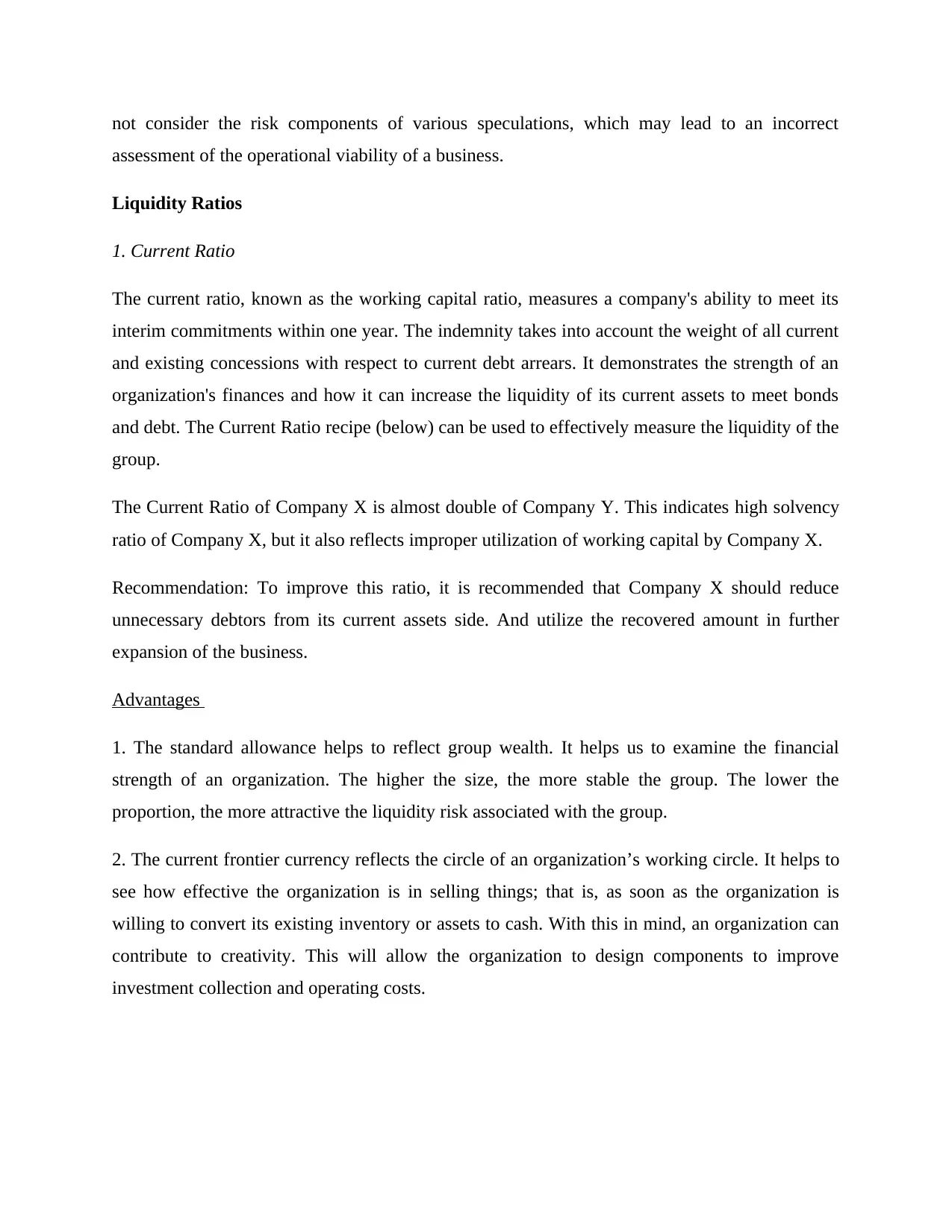
not consider the risk components of various speculations, which may lead to an incorrect
assessment of the operational viability of a business.
Liquidity Ratios
1. Current Ratio
The current ratio, known as the working capital ratio, measures a company's ability to meet its
interim commitments within one year. The indemnity takes into account the weight of all current
and existing concessions with respect to current debt arrears. It demonstrates the strength of an
organization's finances and how it can increase the liquidity of its current assets to meet bonds
and debt. The Current Ratio recipe (below) can be used to effectively measure the liquidity of the
group.
The Current Ratio of Company X is almost double of Company Y. This indicates high solvency
ratio of Company X, but it also reflects improper utilization of working capital by Company X.
Recommendation: To improve this ratio, it is recommended that Company X should reduce
unnecessary debtors from its current assets side. And utilize the recovered amount in further
expansion of the business.
Advantages
1. The standard allowance helps to reflect group wealth. It helps us to examine the financial
strength of an organization. The higher the size, the more stable the group. The lower the
proportion, the more attractive the liquidity risk associated with the group.
2. The current frontier currency reflects the circle of an organization’s working circle. It helps to
see how effective the organization is in selling things; that is, as soon as the organization is
willing to convert its existing inventory or assets to cash. With this in mind, an organization can
contribute to creativity. This will allow the organization to design components to improve
investment collection and operating costs.
assessment of the operational viability of a business.
Liquidity Ratios
1. Current Ratio
The current ratio, known as the working capital ratio, measures a company's ability to meet its
interim commitments within one year. The indemnity takes into account the weight of all current
and existing concessions with respect to current debt arrears. It demonstrates the strength of an
organization's finances and how it can increase the liquidity of its current assets to meet bonds
and debt. The Current Ratio recipe (below) can be used to effectively measure the liquidity of the
group.
The Current Ratio of Company X is almost double of Company Y. This indicates high solvency
ratio of Company X, but it also reflects improper utilization of working capital by Company X.
Recommendation: To improve this ratio, it is recommended that Company X should reduce
unnecessary debtors from its current assets side. And utilize the recovered amount in further
expansion of the business.
Advantages
1. The standard allowance helps to reflect group wealth. It helps us to examine the financial
strength of an organization. The higher the size, the more stable the group. The lower the
proportion, the more attractive the liquidity risk associated with the group.
2. The current frontier currency reflects the circle of an organization’s working circle. It helps to
see how effective the organization is in selling things; that is, as soon as the organization is
willing to convert its existing inventory or assets to cash. With this in mind, an organization can
contribute to creativity. This will allow the organization to design components to improve
investment collection and operating costs.
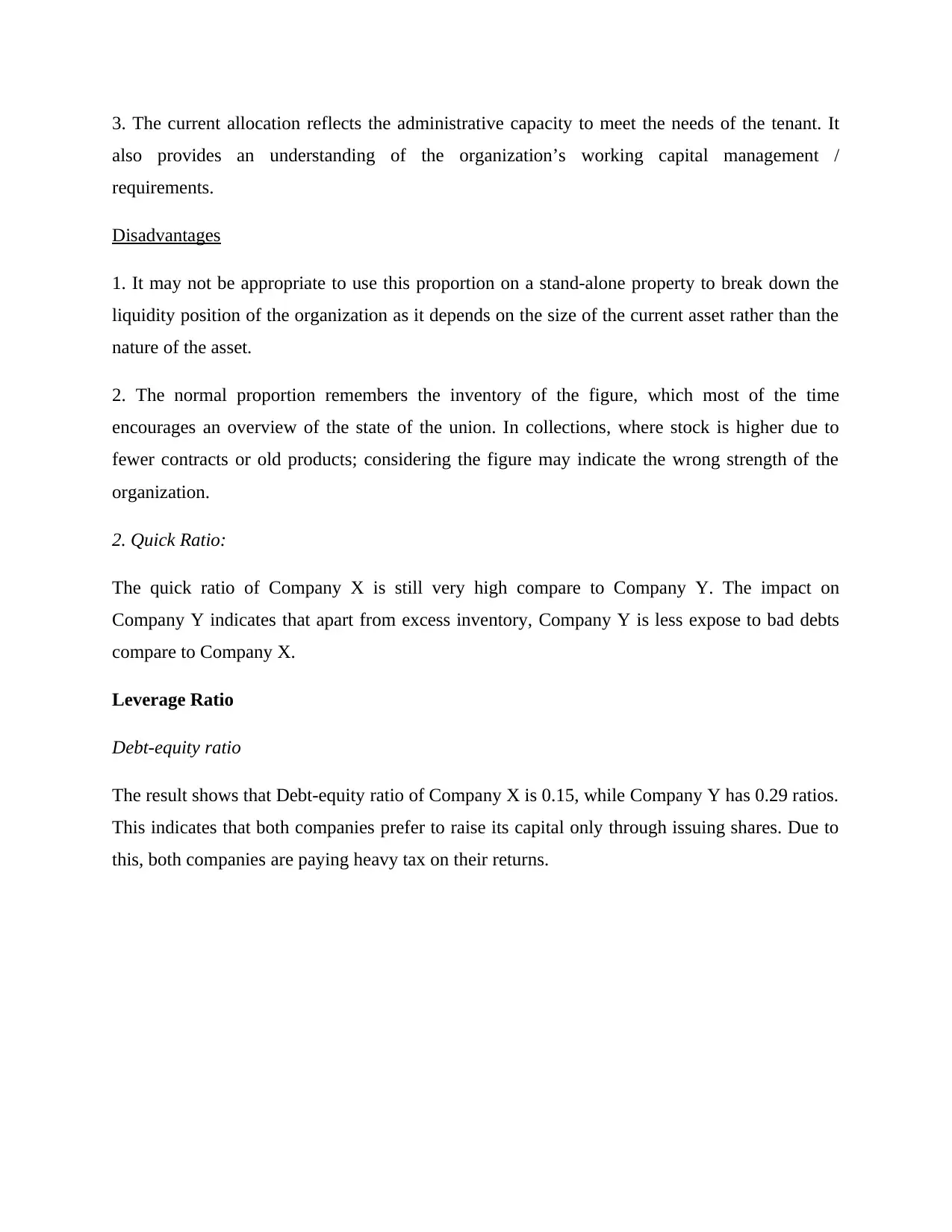
3. The current allocation reflects the administrative capacity to meet the needs of the tenant. It
also provides an understanding of the organization’s working capital management /
requirements.
Disadvantages
1. It may not be appropriate to use this proportion on a stand-alone property to break down the
liquidity position of the organization as it depends on the size of the current asset rather than the
nature of the asset.
2. The normal proportion remembers the inventory of the figure, which most of the time
encourages an overview of the state of the union. In collections, where stock is higher due to
fewer contracts or old products; considering the figure may indicate the wrong strength of the
organization.
2. Quick Ratio:
The quick ratio of Company X is still very high compare to Company Y. The impact on
Company Y indicates that apart from excess inventory, Company Y is less expose to bad debts
compare to Company X.
Leverage Ratio
Debt-equity ratio
The result shows that Debt-equity ratio of Company X is 0.15, while Company Y has 0.29 ratios.
This indicates that both companies prefer to raise its capital only through issuing shares. Due to
this, both companies are paying heavy tax on their returns.
also provides an understanding of the organization’s working capital management /
requirements.
Disadvantages
1. It may not be appropriate to use this proportion on a stand-alone property to break down the
liquidity position of the organization as it depends on the size of the current asset rather than the
nature of the asset.
2. The normal proportion remembers the inventory of the figure, which most of the time
encourages an overview of the state of the union. In collections, where stock is higher due to
fewer contracts or old products; considering the figure may indicate the wrong strength of the
organization.
2. Quick Ratio:
The quick ratio of Company X is still very high compare to Company Y. The impact on
Company Y indicates that apart from excess inventory, Company Y is less expose to bad debts
compare to Company X.
Leverage Ratio
Debt-equity ratio
The result shows that Debt-equity ratio of Company X is 0.15, while Company Y has 0.29 ratios.
This indicates that both companies prefer to raise its capital only through issuing shares. Due to
this, both companies are paying heavy tax on their returns.
⊘ This is a preview!⊘
Do you want full access?
Subscribe today to unlock all pages.

Trusted by 1+ million students worldwide
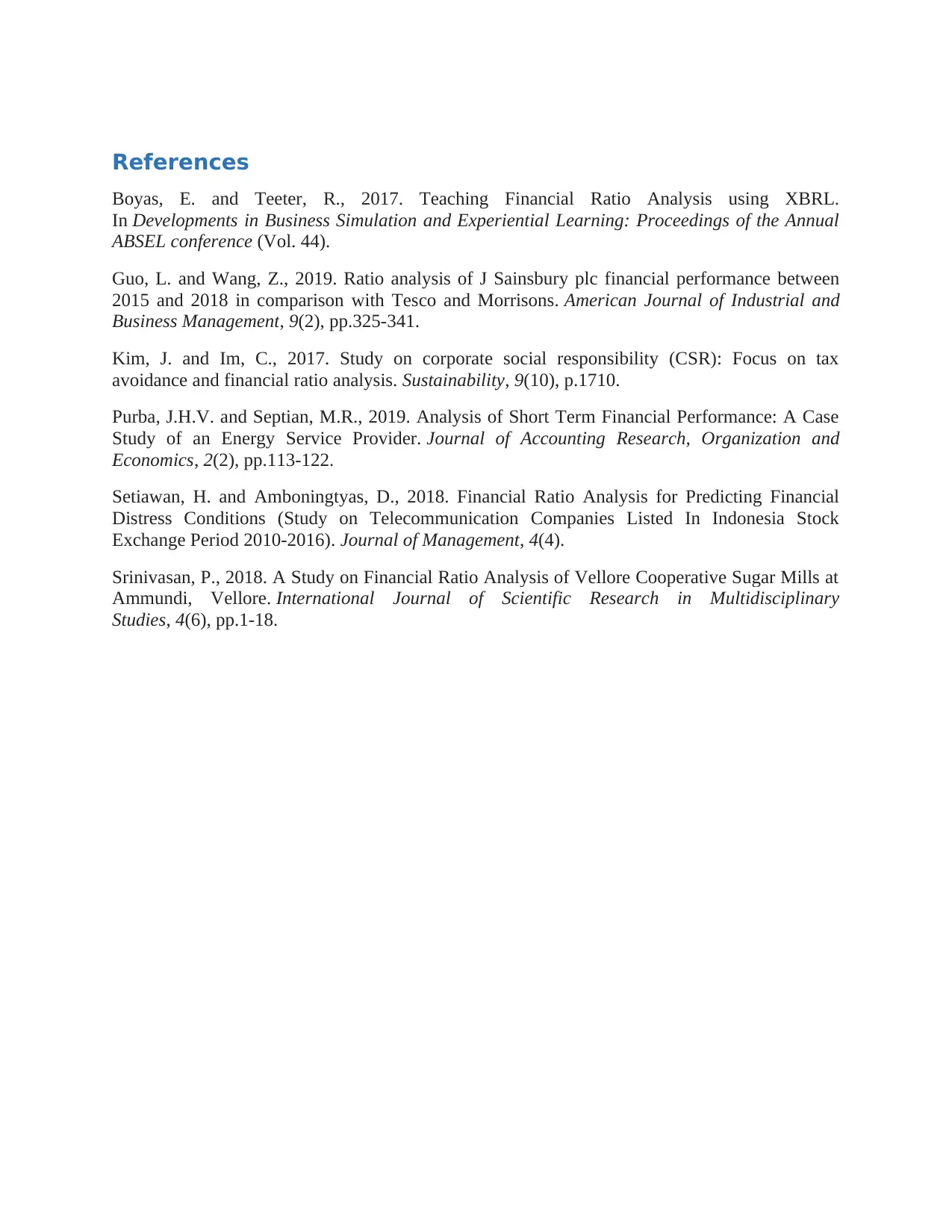
References
Boyas, E. and Teeter, R., 2017. Teaching Financial Ratio Analysis using XBRL.
In Developments in Business Simulation and Experiential Learning: Proceedings of the Annual
ABSEL conference (Vol. 44).
Guo, L. and Wang, Z., 2019. Ratio analysis of J Sainsbury plc financial performance between
2015 and 2018 in comparison with Tesco and Morrisons. American Journal of Industrial and
Business Management, 9(2), pp.325-341.
Kim, J. and Im, C., 2017. Study on corporate social responsibility (CSR): Focus on tax
avoidance and financial ratio analysis. Sustainability, 9(10), p.1710.
Purba, J.H.V. and Septian, M.R., 2019. Analysis of Short Term Financial Performance: A Case
Study of an Energy Service Provider. Journal of Accounting Research, Organization and
Economics, 2(2), pp.113-122.
Setiawan, H. and Amboningtyas, D., 2018. Financial Ratio Analysis for Predicting Financial
Distress Conditions (Study on Telecommunication Companies Listed In Indonesia Stock
Exchange Period 2010-2016). Journal of Management, 4(4).
Srinivasan, P., 2018. A Study on Financial Ratio Analysis of Vellore Cooperative Sugar Mills at
Ammundi, Vellore. International Journal of Scientific Research in Multidisciplinary
Studies, 4(6), pp.1-18.
Boyas, E. and Teeter, R., 2017. Teaching Financial Ratio Analysis using XBRL.
In Developments in Business Simulation and Experiential Learning: Proceedings of the Annual
ABSEL conference (Vol. 44).
Guo, L. and Wang, Z., 2019. Ratio analysis of J Sainsbury plc financial performance between
2015 and 2018 in comparison with Tesco and Morrisons. American Journal of Industrial and
Business Management, 9(2), pp.325-341.
Kim, J. and Im, C., 2017. Study on corporate social responsibility (CSR): Focus on tax
avoidance and financial ratio analysis. Sustainability, 9(10), p.1710.
Purba, J.H.V. and Septian, M.R., 2019. Analysis of Short Term Financial Performance: A Case
Study of an Energy Service Provider. Journal of Accounting Research, Organization and
Economics, 2(2), pp.113-122.
Setiawan, H. and Amboningtyas, D., 2018. Financial Ratio Analysis for Predicting Financial
Distress Conditions (Study on Telecommunication Companies Listed In Indonesia Stock
Exchange Period 2010-2016). Journal of Management, 4(4).
Srinivasan, P., 2018. A Study on Financial Ratio Analysis of Vellore Cooperative Sugar Mills at
Ammundi, Vellore. International Journal of Scientific Research in Multidisciplinary
Studies, 4(6), pp.1-18.
Paraphrase This Document
Need a fresh take? Get an instant paraphrase of this document with our AI Paraphraser

Appendices
Profitability Company X Company Y
Gross Profit Margin 21.25% 15.45%
Net Profit Margin 5.75% 5.27%
Return on capital employed 11.79% 13.03%
Liquidity
Current ratio 6.00 3.38
Quick ratio 4.00 1.88
Leverage
Debt-equity ratio 0.15 0.29
Profitability Company X Company Y
Gross Profit Margin 21.25% 15.45%
Net Profit Margin 5.75% 5.27%
Return on capital employed 11.79% 13.03%
Liquidity
Current ratio 6.00 3.38
Quick ratio 4.00 1.88
Leverage
Debt-equity ratio 0.15 0.29
1 out of 11
Related Documents
Your All-in-One AI-Powered Toolkit for Academic Success.
+13062052269
info@desklib.com
Available 24*7 on WhatsApp / Email
![[object Object]](/_next/static/media/star-bottom.7253800d.svg)
Unlock your academic potential
Copyright © 2020–2025 A2Z Services. All Rights Reserved. Developed and managed by ZUCOL.





